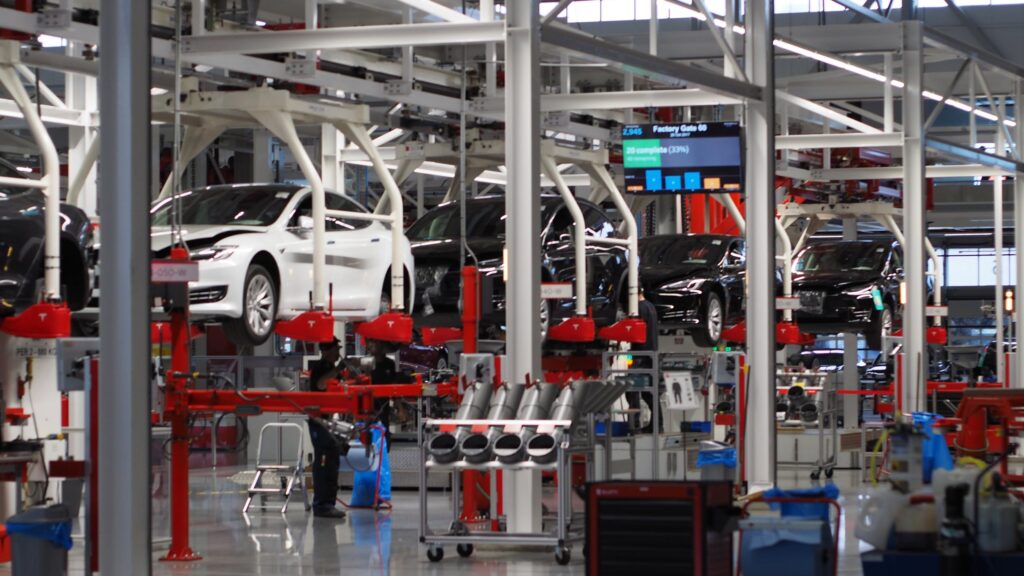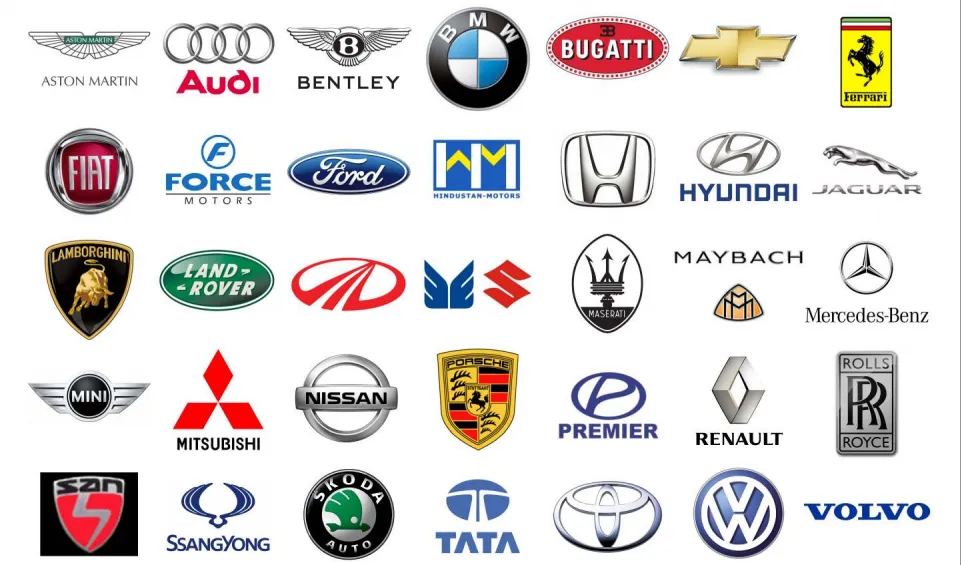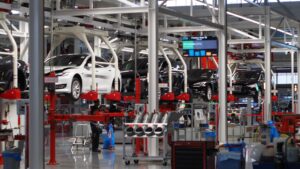
Automobile industry
The Indian auto industry is one of the largest in the world. The industry accounts for 7.1 per cent of the country’s Gross Domestic Product (GDP). The Two Wheelers segment with 81 per cent market share is the leader of the Indian Automobile market owing to a growing middle class and a young population. Moreover, the growing interest of the companies in exploring the rural markets further aided the growth of the sector. The overall Passenger Vehicle (PV) segment has a 13 per cent market share. India is also a prominent auto exporter and has strong export growth expectations for the near future. In April-January 2016, exports of Commercial Vehicles registered a growth of 18.36 per cent over April-January 2015. In addition, several initiatives by the Government of India and the major automobile players in the Indian market are expected to make India a leader in the Two Wheeler (2W) and Four Wheeler (4W) market in the world by 2020.
Sales of passenger vehicles increased by 16.7 per cent to 258,000 units in August 2016 driven by better-than-expected monsoon and strong buying sentiment*. Sales of commercial vehicles grew by 1.53 per cent to 52,996 units. The two-wheeler industry also performed well. Motorcycle sales grew 22 per cent to 1 million units, while overall two-wheeler sales grew 26.3 per cent to 1.64 million units. In order to keep up with the growing demand, several automakers have started investing heavily in various segments of the industry during the last few months. The industry has attracted Foreign Direct Investment (FDI) worth US$ 15.06 billion during the period April 2000 to March 2016, according to data released by the Department of Industrial Policy and Promotion (DIPP).

Some of the major investments and developments in the automobile sector in India are as follows:
-Jaguar Land Rover, the UK-based automotive company, plans to manufacture Land Rover SUV for the local market and as well as for export, most probably at its plant in Pune.
-Italian automobile manufacturer Fiat has announced its plans to start local production at the Ranjangoan plant in Pune from the second quarter of next year at the launch of its two sports
utility vehicles (SUVs), namely Jeep Wrangler and Grand Cherokee.
-MV Agusta, the Italy-based premium motorcycle manufacturer, has entered India through an exclusive partnership with Pune-based Kinetic group with the launch of three luxury bikes, which
will be sold through the ‘Motoroyale’ chain in Pune.
-Sweden-based electric vehicle maker Clean Motion plans to invest US$ 10 million in India over the next three years in order to expand operations including setting up an assembly unit for its Zbee three-wheelers in the country.
-Isuzu Motors, the Japan-based utility vehicle manufacturer, has inaugurated its greenfield manufacturing unit in SriCity, Andhra Pradesh, at a cost of fcRs 3,000 crores (US$ 450.94 million).
-Japanese two-wheeler manufacturer Honda Motorcycle and Scooter India (HMSI) has opened its fourth and world’s largest scooter plant in Gujarat, set up to initially produce 600,000 scooters per annum to be scaled up to 1.2 million scooters per annum by mid-2016.
-American carmaker Ford has unveiled its iconic Ford Mustang in India and will make its debut in the second quarter of FY2016 within the price band of Rs 45 lakh (US$ 66,146) and Rs 50 lakh
(US$ 73,496) in the Indian market.
-Nissan Motor Co. Ltd is in discussion with the Government of India to bring electric and hybrid technologies to India as the government plans to reduce air pollution caused by vehicles.
-Global auto major Ford plans to manufacture in India two families of engines by 2017, a 2.2-liter diesel engine codenamed Panther, and a 1.2-liter petrol engine codenamed Dragon, which
are expected to power 270,000 Ford vehicles globally.
-The world’s largest airbag suppliers Autoliv Inc, Takata Corp, TRW Automotive Inc, and Toyoda Gosei Co are setting up plants and increasing capacity in India.
-General Motors plans to invest US$ 1 billion in India by 2020, mainly to increase the capacity at the Talegaon plant in Maharashtra from 130,000 units a year to 220,000 by 2025.
-US-based carmaker Chrysler has planned to invest Rs 3,500 crore (US$ 513.5 million) in Maharashtra, to manufacture the Jeep Grand Cherokee model.
-Mercedes Benz has decided to manufacture the GLA entry SUV in India. The company has doubled its India assembly capacity to 20,000 units per annum.
-Germany-based luxury car maker Bayerische Motoren Werke AG’s (BMW) local unit has announced to procure components from seven India-based auto parts makers.
-Mahindra Two Wheelers Limited (MTWL) acquired 51 per cent shares in France-based Peugeot Motorcycles (PMTC).
The vehicle sales is down in the past six months. People are reluctant to buy new vehicles. People think that if electric vehicles come into operation, naturally the prices of petrol or diesel vehicles would come down., and then we would go for the same. They also think that if people who chose to buy electric vehicles, would naturally tend to sell their old petrol or diesel vehicles and there would be a lot of new vehicles in the second-hand market. So, many are not interested in buying the vehicles., at present.
When the vehicles sales go down, naturally, the dealers who spend thousands of rupees on a showroom find it hard for managing the showrooms. Some who cannot withstand, close down their showrooms. This is not only in India, but throughout the world, the same situation prevails. In many countries like UK., USA and Japan, and other countries also the sales of automobiles have slowed down. This was bound to happen as we are the second-largest populous country and traveling is not a luxury anymore but a crying need. The majority of our population is young and working which lead to Hero Moto Corp being the largest 2 wheeler manufacturer in the whole world (by volume). Many other factors also affected this like the parking space availability, low cost and urban road connectivity. Similar is the condition of the car segment. With an increasing disposable income of the middle-class family and globalization, India was responsible for 4.7 million units of vehicles (cars and CV) in 2017 marking an increase of 5.83% from the previous year. As per the data from the Society of Indian Automobile Manufacturers (SIAM), 191,082 passenger cars were sold in March — up from 190,236 units off-take during the corresponding month of 2017. However, the off-take of other sub-segments of the passenger vehicle category such as utility vehicles edged higher by 17.74 percent during the month to 91,483 units while sales of vans rose by 22.97 percent to 18,157 units. Consequently, the overall domestic passenger vehicle sales inched up by 6.38 per cent in March to 300,722 units from 282,698 units sold during the corresponding period in 2017. Similarly, the industry data revealed that sales of overall commercial vehicles zoomed by 24.55 per cent to 108,681 units in March. The segment is a key indicator of economic activity. Another major segment — three-wheelers – sales accelerated by 85.81 per cent to 72,465 units during the month. The auto industry is facing a slowdown in demand and is blaming everybody for it except itself, forgetting that the industry is alone responsible for its problems. The industry committed the mistakes of over-trading, flawed demand forecast, failure to align production with demand, creation of excess capacity, overpricing, and not adopting the time-tested technique of JIT. The automakers do not manufacture anything; they just assemble the vehicles. While the component manufacturers can adopt the concept of mass production in order to reap the advantages of economy of scale, the automakers should stick to the JIT concept for the simple reason that an automobile is not a consumer product. The automakers resorted to production-led marketing instead of market-led production. The industry does not deserve any sops whatsoever.




